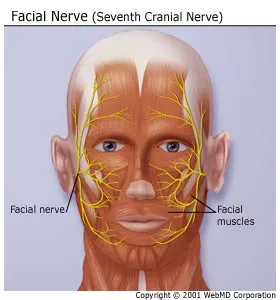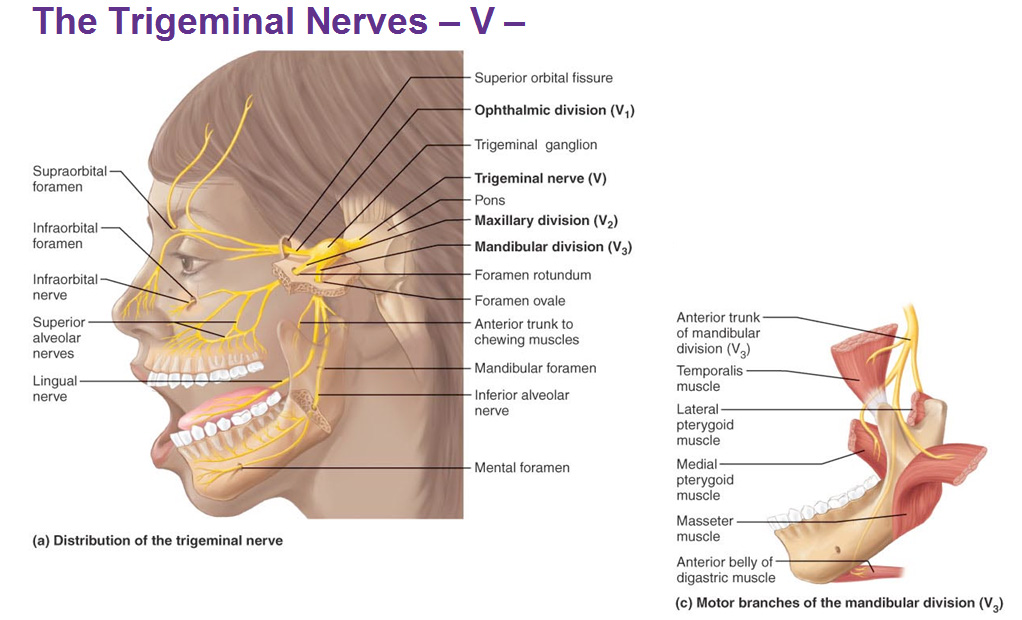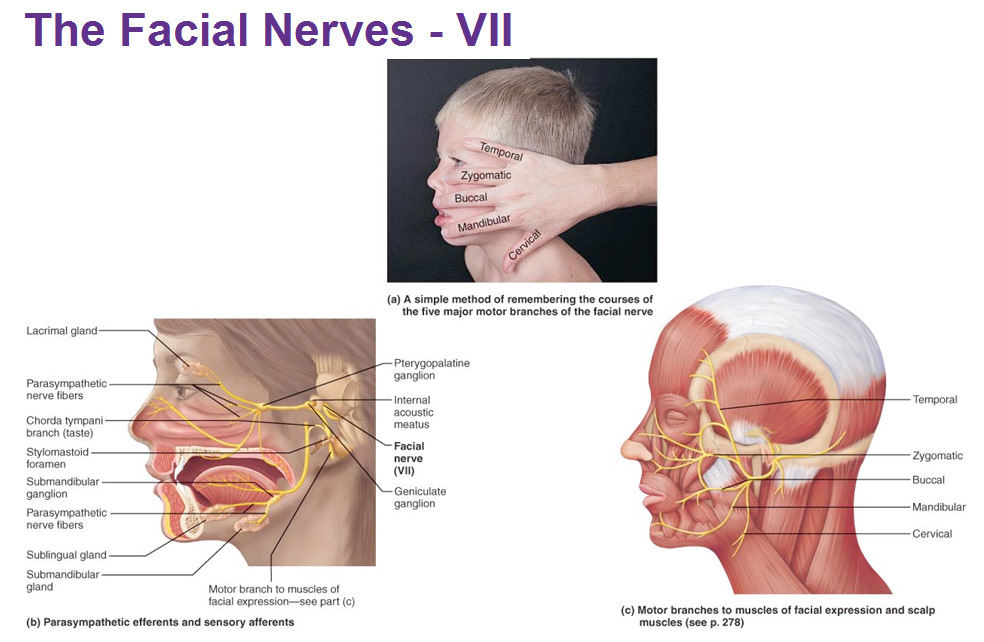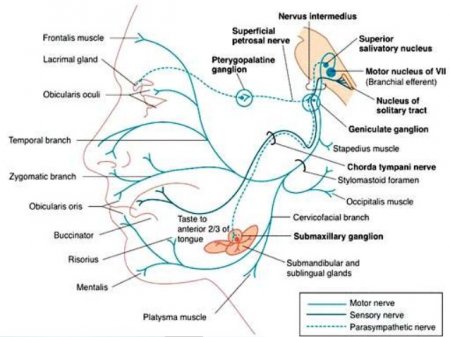

Mentation, head posture and coordination, and cranial nerve functions are observed during evaluation of the head. Abnormal findings are due to lesions above the level of the foramen magnum in the cerebrum, the brain stem (diencephalon, midbrain, pons, or medulla oblongata), or the cerebellum.
The autonomic nervous system (ANS), formerly the vegetative nervous system, is a functional system not the anatomical division known as peripheral nervous system which would include upper and lower limbs peripheral nervous system supplies smooth muscle and glands, and thus influences the function of internal organs.
Human nervous system – Cranial nerves: Cranial nerves can be thought of as modified spinal nerves, since the general functional fibre types found in spinal nerves are also found in cranial nerves but are supplemented by special afferent or efferent fibres.




Clinical signs of facial paralysis vary with the location, severity, and chronicity of the lesion. If a unilateral lesion is located in the facial nucleus or proximal portion of the facial nerve, paresis or paralysis of the eyelids, …

Human nervous system, system that conducts stimuli from sensory receptors to the brain and spinal cord and that conducts impulses back to other parts of the body. As with other higher vertebrates, the human nervous system has two main parts: the central nervous system (the brain and spinal cord) and the peripheral nervous system (the …
The nervous system consists of the brain, spinal cord, sensory organs, and all of the nerves that connect these organs with the rest of the body.
The Human Nervous System consists of the Central Nervous System & the Peripheral Nervous System.. Central Nervous System:. 1 – Brain 2 – Spinal cord Peripheral Nervous System:

The facial feedback hypothesis states that facial movement can influence emotional experience. For example, an individual who is forced to smile during a social event will actually come to find the event more of an enjoyable experience.

The nervous system is the master controlling and communicating system of the body. Every thought, action, and emotion reflects its activity. Its signaling device, or means of communicating with body cells, is electrical impulses, which are rapid and specific and cause almost immediate responses.
The central nervous system or CNS include the brain and spinal cord. The CNS is responsible for the control of thought processes, movement, and provides sensation throughout the body.
